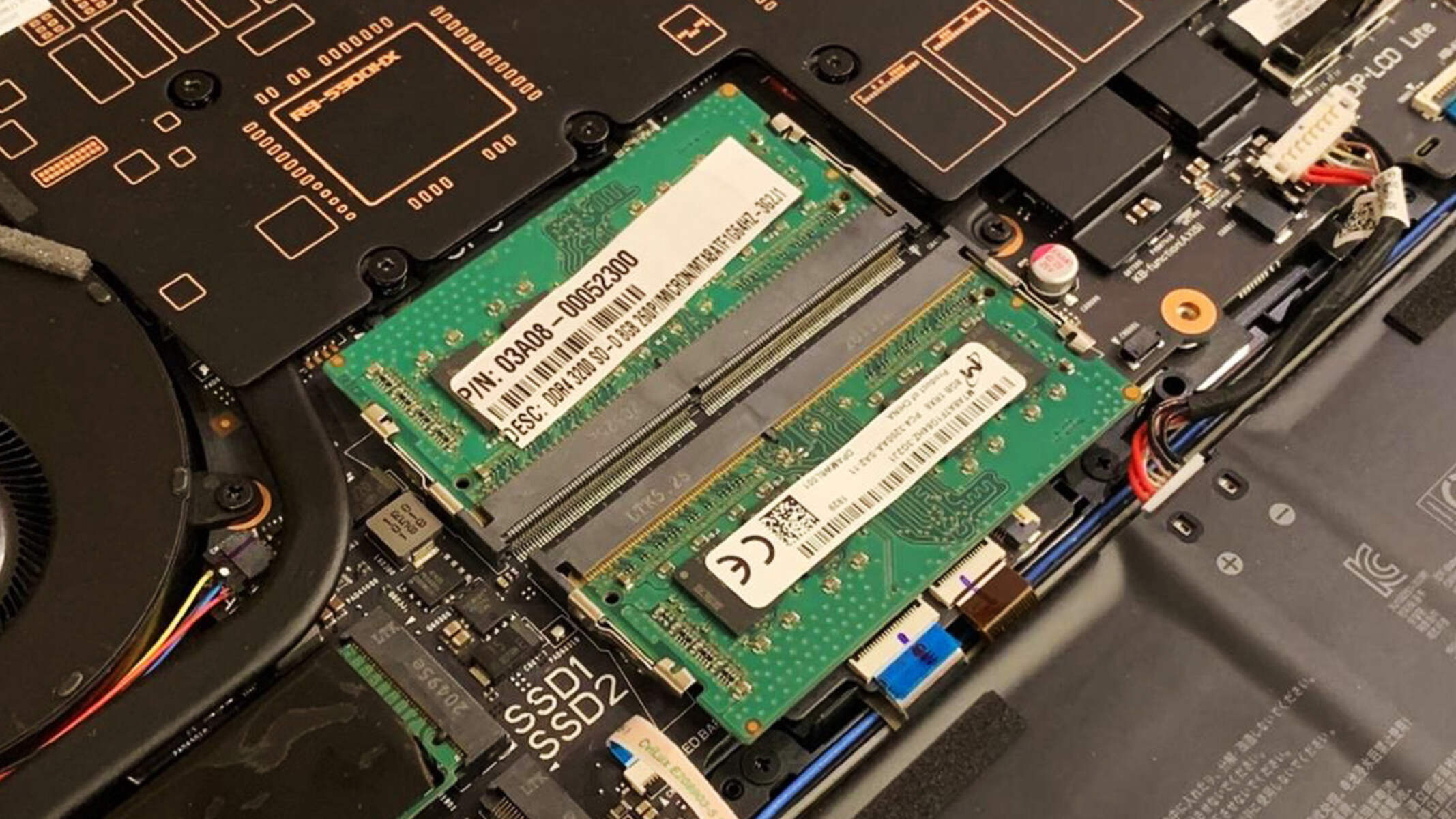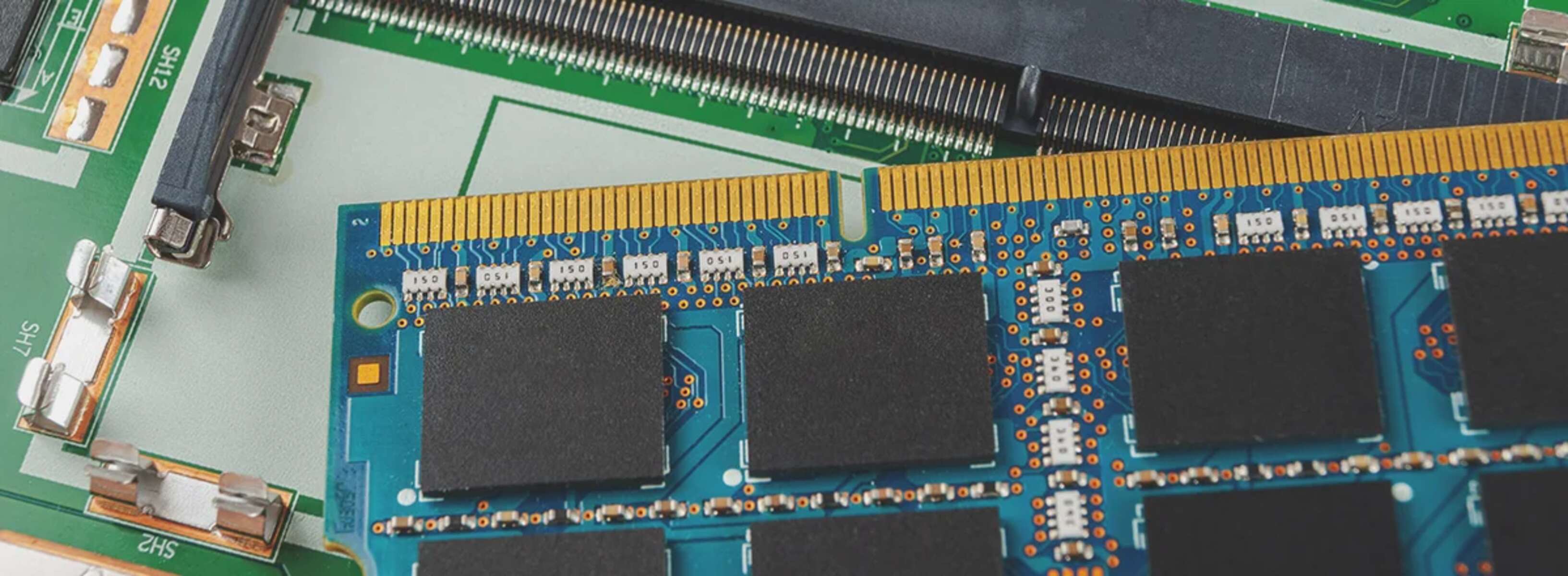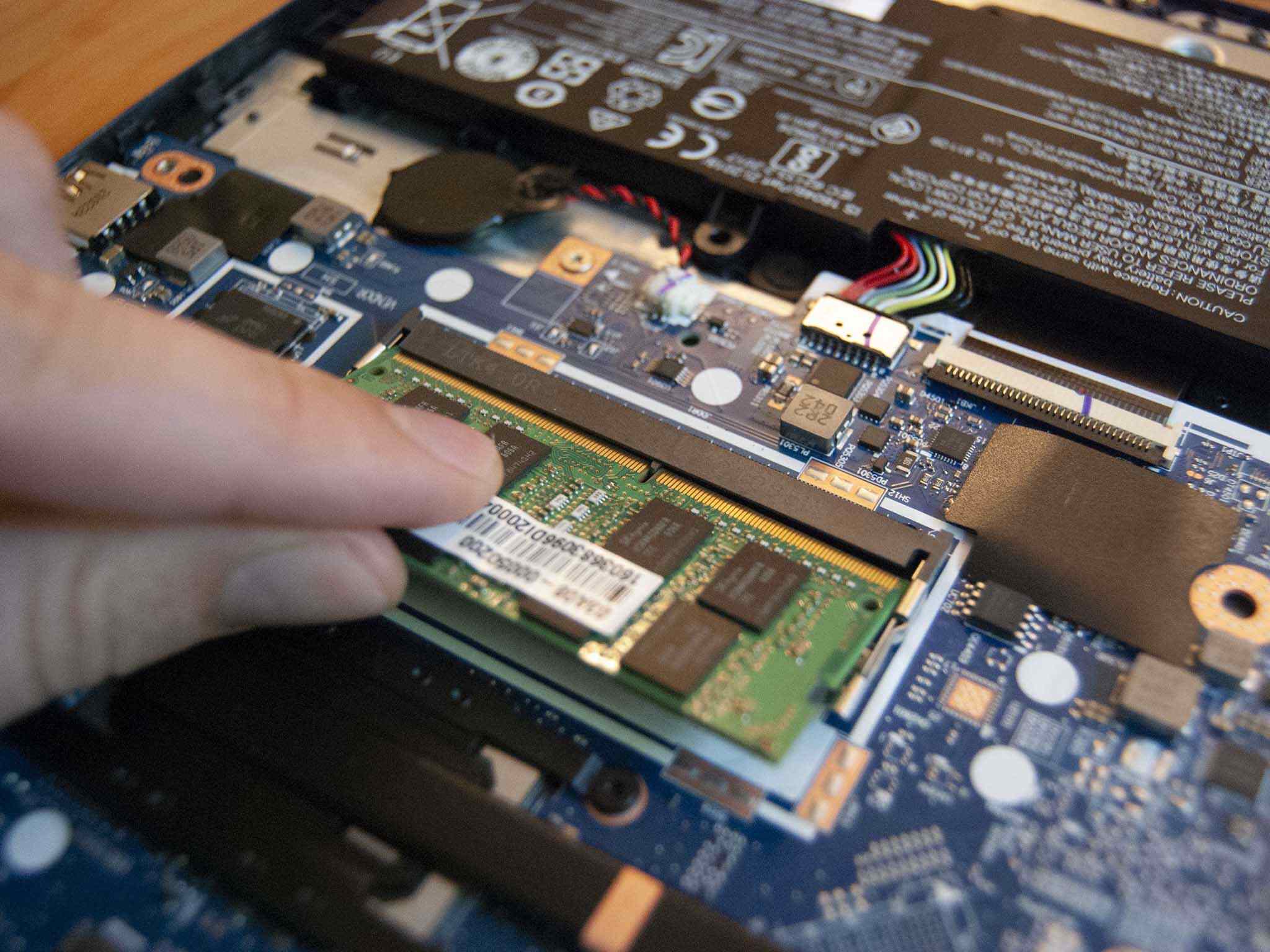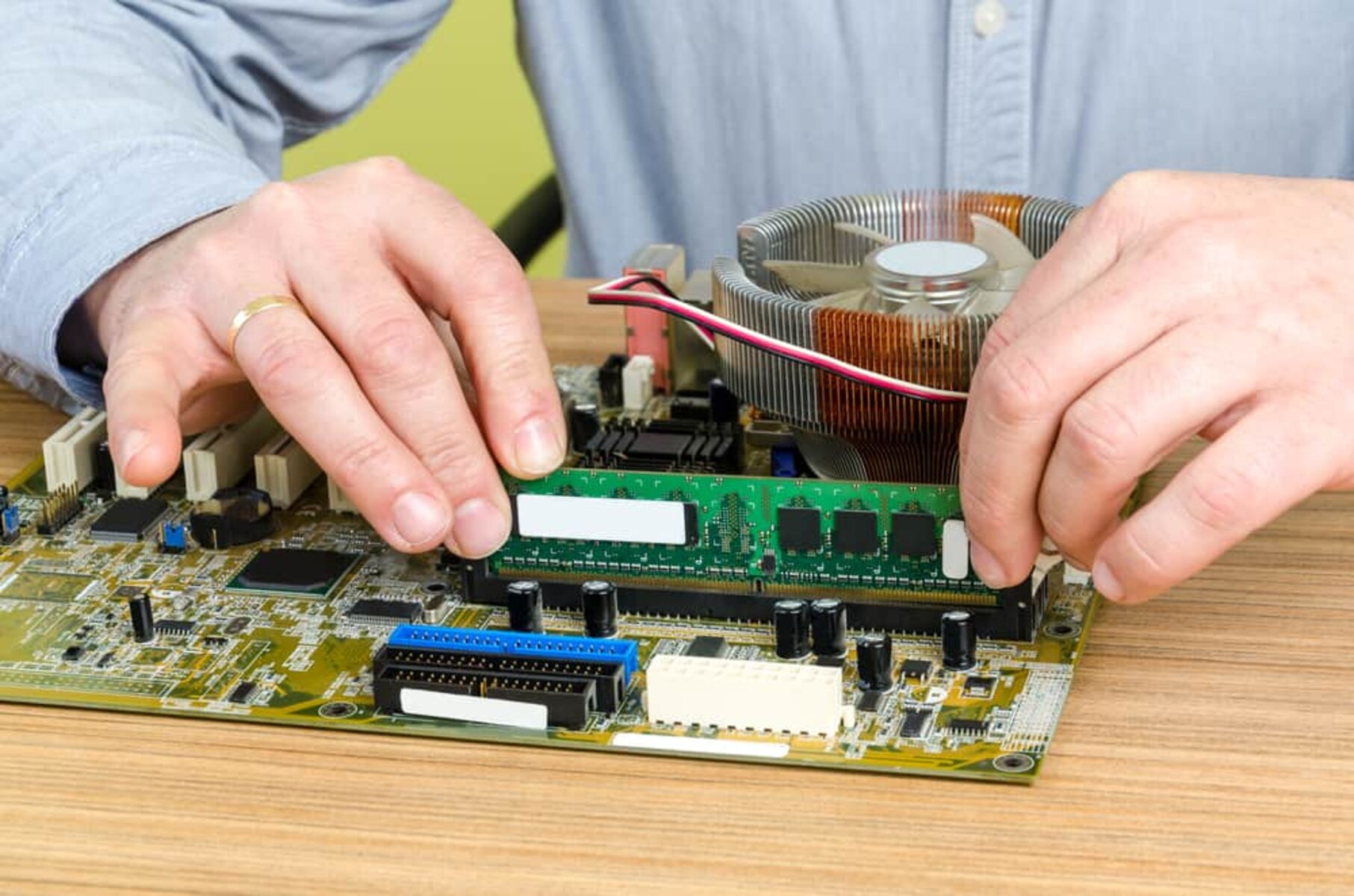Introduction
Welcome to the world of computer hardware! If you are wondering about the maximum amount of RAM that can be installed in your computer, you have come to the right place. Random Access Memory, or RAM, is an essential component of any computer system, as it plays a crucial role in determining its performance and efficiency.
RAM is a volatile memory that serves as a temporary storage space for data that the computer’s processor can quickly access. It allows your computer to multitask, run applications smoothly, and handle complex tasks with ease. Understanding how much RAM your computer can handle is essential, as it can greatly impact your overall computing experience.
Knowing the maximum RAM capacity of your computer is crucial for several reasons. First, it allows you to determine whether an upgrade is possible or necessary. If you are experiencing sluggish performance or your computer struggles to handle demanding software, adding more RAM might be the solution. Additionally, knowing the RAM limits can help you make informed decisions when purchasing a new computer by ensuring it meets your future needs.
However, determining the maximum RAM capacity of your computer is not as straightforward as it may seem. There are various factors to consider, such as compatibility with the operating system, limitations imposed by the motherboard, and whether your system is running on a 32-bit or 64-bit architecture.
In this article, we will explore these factors in detail and guide you through the process of checking your current RAM size, determining the maximum RAM capacity, and upgrading your RAM if necessary. We will also provide some helpful tips for optimizing your RAM performance to get the most out of your computer.
So, if you are ready to dive into the world of RAM and unlock the full potential of your computer, let’s get started!
Understanding RAM
Before we dive into the intricacies of determining the maximum RAM capacity of your computer, let’s first develop a solid understanding of what RAM is and its significance in a computer system.
RAM, or Random Access Memory, is a vital component of your computer’s hardware. It is a type of volatile memory that allows your computer to store and access data quickly. Unlike the long-term storage provided by your hard drive or SSD, RAM provides temporary storage that is easily and swiftly accessible by the computer’s processor.
Think of RAM as a desk space where you can keep the documents and files that you are currently working on. The larger the desk, the more files you can have readily available for quick access. Similarly, having more RAM allows your computer to store and access a greater amount of data, resulting in smoother multitasking and faster performance.
When you open an application or a file, it gets loaded into RAM, allowing the processor to retrieve the necessary data and execute the tasks quickly. As you switch between different applications or perform various tasks simultaneously, the computer relies on the RAM to store the required data for each process.
One important thing to note about RAM is its volatile nature. This means that the data stored in RAM is lost once the computer is powered off or restarted. It is crucial to save your work regularly and rely on long-term storage options like hard drives or SSDs for permanent data storage.
The size of RAM is measured in gigabytes (GB). Common sizes include 4GB, 8GB, 16GB, and even higher capacities. The more RAM your computer has, the more data it can store and access at any given time. However, it’s important to note that adding more RAM does not directly translate to faster performance. RAM works in conjunction with the computer’s processor and other hardware components to deliver optimal performance.
Now that you have a basic understanding of what RAM is and how it functions, let’s move on to exploring the factors that determine the maximum amount of RAM your computer can handle.
RAM Compatibility
RAM compatibility is a crucial factor to consider when determining the maximum RAM capacity your computer can handle. Not all RAM modules are compatible with all computers, so it’s important to ensure that the RAM you choose is compatible with your system’s specifications.
The first aspect of RAM compatibility to consider is the type of RAM your computer supports. There are several types of RAM, including DDR3, DDR4, and the older DDR2. Each type has a different physical design and electrical characteristics, and they are not interchangeable. Therefore, it’s essential to check your computer’s specifications to identify the type of RAM it supports.
Furthermore, RAM modules come in different form factors, such as DIMM (Dual In-Line Memory Module) and SO-DIMM (Small Outline Dual In-Line Memory Module). DIMM modules are commonly used in desktop computers, while SO-DIMM modules are typically found in laptops and small form factor PCs. It’s vital to choose the correct form factor that matches your computer’s memory slots.
Another consideration is the RAM’s speed, often referred to as the memory frequency or clock speed. RAM modules are available in different speeds, such as 2400MHz, 3200MHz, or higher. It’s important to consult your computer’s documentation to determine the maximum supported RAM speed. While it’s possible to install RAM with a higher speed rating, it will typically be clocked down to match the maximum supported speed.
Additionally, the capacity of each RAM module needs to be compatible with your computer. For example, if your computer supports a maximum of 16GB of RAM per module, installing a 32GB module would not be compatible. It’s crucial to check your computer’s specifications and ensure that the capacity of the RAM modules you choose aligns with the supported limits.
Lastly, it’s essential to consider the number of memory slots available on your motherboard. Motherboards have a limited number of slots where you can install RAM, such as two, four, or more slots. The maximum capacity of your computer’s RAM is determined by both the maximum capacity per module and the number of slots available. For example, a computer with four RAM slots and a maximum supported capacity of 32GB per module could potentially handle up to 128GB of RAM.
Understanding RAM compatibility is crucial in ensuring that the RAM you choose is compatible with your computer. Consulting your computer’s documentation or visiting the manufacturer’s website is the best way to determine which RAM modules are compatible with your system.
In the next section, we will explore how the operating system limits can affect the maximum RAM capacity of your computer.
The Operating System Limit
When considering the maximum RAM capacity of your computer, it’s essential to take into account the limitations imposed by the operating system you are using. Different operating systems have varying restrictions on the amount of RAM they can support.
32-bit operating systems, such as older versions of Windows and some Linux distributions, have a maximum RAM limit of 4GB. This means that even if your computer’s hardware can support more RAM, the operating system will not be able to utilize it fully. If you are running a 32-bit operating system, upgrading beyond 4GB of RAM will not provide any additional benefit, as the excess RAM will go unused.
On the other hand, 64-bit operating systems, such as modern versions of Windows, macOS, and Linux, can support much larger amounts of RAM. The exact limit depends on the specific version of the operating system. For example, the 64-bit version of Windows 10 Home has a maximum RAM limit of 128GB, while the Professional and Enterprise editions can support up to 2TB of RAM.
It’s crucial to ensure that your operating system is 64-bit before investing in additional RAM beyond the 4GB limit of 32-bit systems. To check if you are running a 32-bit or 64-bit operating system on Windows, go to the System settings. On macOS, click the Apple menu and select About This Mac. On Linux, you can use the uname -m command in the terminal to check your system’s architecture.
Upgrading to a 64-bit operating system allows you to take full advantage of the maximum RAM capacity your hardware can support. It not only provides access to larger RAM sizes but also offers other benefits, such as improved performance, better security, and compatibility with modern software and drivers.
However, it’s important to note that while 64-bit operating systems have significantly higher RAM limits, most consumer-grade systems do not require or benefit from extreme amounts of RAM. For typical desktop or laptop usage, a RAM capacity of 8GB to 16GB is often sufficient for smooth multitasking, web browsing, and running a variety of applications.
In the next section, we will explore another crucial factor in determining the maximum RAM capacity of your computer: the limitations imposed by the motherboard.
The Motherboard Limit
While the operating system plays a significant role in determining the maximum RAM capacity of your computer, the motherboard also imposes limitations on the amount of RAM your system can handle. The motherboard is the main circuit board that connects various hardware components in your computer.
One of the crucial factors to consider when determining the motherboard’s RAM capacity is the number of memory slots available. Each memory slot on the motherboard allows you to install a RAM module. Motherboards typically have two, four, or more memory slots, depending on the model.
The maximum RAM capacity of your computer is determined by a combination of the maximum capacity per module, as mentioned earlier, and the number of memory slots on the motherboard. For example, if your motherboard has four memory slots and supports a maximum capacity of 16GB per module, the maximum overall RAM capacity would be 64GB (4 x 16GB).
It’s important to consult your motherboard’s documentation or visit the manufacturer’s website to determine the exact RAM capacity limits. This information is typically listed in the motherboard’s specifications and can vary depending on the model and version.
In addition to the number of memory slots, the motherboard also has a specific type and speed of RAM that it supports. As mentioned in the previous section, different types of RAM, such as DDR3 and DDR4, have different physical designs and electrical characteristics. The motherboard must support the specific type of RAM you intend to install.
Additionally, the motherboard also has a maximum supported RAM speed. RAM modules come in various speeds, such as 2400MHz, 3200MHz, or higher. It’s important to ensure that the motherboard supports the desired RAM speed to take full advantage of its capabilities. If the motherboard limits the RAM speed, the modules will be clocked down to match the supported speed.
It’s important to note that the motherboard’s limitations cannot be overcome by the operating system or other software. If your motherboard has a maximum RAM capacity of, for example, 16GB, even if your operating system and hardware can support more, you will not be able to install more than the motherboard’s specified limit.
Consulting the motherboard’s documentation and specifications is the best way to determine its RAM capacity limits and ensure compatibility with your desired RAM modules.
Now that we have explored the limitations imposed by the operating system and motherboard, we will dive into the differences between 32-bit and 64-bit systems in the next section.
32-bit vs 64-bit Systems
When it comes to determining the maximum RAM capacity for your computer, the difference between 32-bit and 64-bit systems plays a significant role. The terms “32-bit” and “64-bit” refer to the architecture of the operating system and the hardware it can support.
A 32-bit system is limited to utilizing a maximum of 4GB of RAM. This is because 32-bit architectures have a memory addressing limit of 4GB. Even if your computer has more than 4GB of RAM installed, a 32-bit operating system will not be able to fully utilize the additional memory. This is why it is essential to upgrade to a 64-bit operating system if you wish to take advantage of larger RAM capacities.
On the other hand, a 64-bit system can support significantly larger amounts of RAM. The memory addressing limit for 64-bit architectures is considerably higher, allowing for terabytes of RAM to be utilized. The specific maximum RAM capacity supported by a 64-bit operating system depends on the version and edition of the software.
Upgrading to a 64-bit system not only enables you to take full advantage of larger RAM capacities but also offers several other benefits. While 32-bit systems can address up to 4GB of RAM, 64-bit systems can handle larger amounts of data and are more efficient at multitasking and running memory-intensive applications.
Another advantage of 64-bit systems is improved security. 64-bit operating systems use a technology called Address Space Layout Randomization (ASLR), which makes it harder for hackers to predict memory addresses and exploit vulnerabilities in the system.
However, it’s important to note that not all older computer systems are compatible with 64-bit operating systems. To run a 64-bit system, your computer’s processor must support 64-bit architecture. Additionally, you may need to ensure that your device drivers and software are compatible with a 64-bit environment.
If you are uncertain about the architecture of your operating system, you can check the system settings or consult the documentation provided with your computer. It’s essential to verify if your hardware and software are compatible with a 64-bit system before considering an upgrade.
In summary, upgrading to a 64-bit operating system is necessary if you wish to utilize larger RAM capacities. It offers improved performance, enhanced security, and compatibility with modern software. However, ensure that your hardware and software are compatible with a 64-bit system before making the transition.
Now that we have covered the differences between 32-bit and 64-bit systems, let’s move on to the practical steps of checking your current RAM size and determining the maximum RAM capacity of your computer.
How to Check the Current RAM Size
Before determining the maximum RAM capacity of your computer, it’s important to check the current amount of RAM installed. There are several ways to do this, depending on your operating system.
On Windows:
One of the simplest ways to check the current RAM size on Windows is to use the Task Manager.
- Right-click on the taskbar and select “Task Manager” from the context menu.
- In the Task Manager window, click on the “Performance” tab.
- Under the “Performance” tab, you will see a section called “Memory.” Here, you can view the total amount of RAM installed on your computer.
Alternatively, you can also use the System Information utility to check the RAM size:
- Press the Windows key + R to open the Run dialog box.
- Type “msinfo32” and press Enter.
- In the System Information window, the total physical memory will be displayed under the “System Summary” section.
On macOS:
To check the current RAM size on macOS, follow these steps:
- Click on the Apple menu in the top-left corner of the screen.
- Select “About This Mac” from the drop-down menu.
- In the window that appears, click on the “Memory” tab. Here, you will find the total amount of RAM installed on your Mac.
On Linux:
In Linux, you can use the command-line tools to check the current RAM size.
Open a terminal and enter the following command:
free -h
This will display information about the memory in your system, including the total amount of RAM.
By following these steps, you can easily determine the current amount of RAM installed on your computer. Once you have this information, you can proceed to the next section to determine the maximum RAM capacity that your system can handle.
How to Determine the Maximum RAM Capacity
Now that you know the current amount of RAM installed on your computer, it’s time to determine the maximum RAM capacity that your system can handle. To do this, you’ll need to consider several factors, including your computer’s hardware specifications and supported limits.
Consult the Motherboard Documentation:
One of the most reliable sources of information regarding your system’s maximum RAM capacity is the documentation provided with your computer’s motherboard. The motherboard manufacturer typically includes detailed specifications and limitations in the user manual or on their website. Look for the specific model of your motherboard and search for information regarding the supported RAM capacities.
If you are unable to find the documentation, you can also identify the model of your motherboard by opening the computer case and locating the model number written on the board itself. With the model number in hand, you can search for the specifications online.
Online System Scanner Tools:
Another option is to use online system scanner tools. Several websites offer these tools, where you can input details about your computer, such as the make and model, to receive information about the maximum RAM capacity. These tools rely on extensive hardware databases to provide accurate information.
While using online system scanner tools can be convenient, it’s important to choose a reputable and trusted source to ensure the accuracy of the information provided.
Contact the Computer Manufacturer:
If you are unsure about your computer’s maximum RAM capacity, another option is to contact the computer manufacturer directly. They should be able to provide you with the necessary information or refer you to the appropriate resources.
When contacting the manufacturer, be sure to provide them with the model and serial number of your computer, as this will help them provide accurate information about the supported RAM limits.
By consulting the motherboard documentation, using online system scanner tools, or contacting the computer manufacturer, you can determine the maximum RAM capacity that your system can handle. Once you have this information, you can proceed with upgrading your RAM to maximize your computer’s performance.
Upgrading RAM
Once you have determined the maximum RAM capacity that your computer can handle, you may decide to upgrade your RAM to improve the performance and overall responsiveness of your system. Upgrading RAM is a relatively straightforward process that can be done by following these steps:
Step 1: Purchase Compatible RAM Modules:
First, identify the type, speed, and capacity of RAM modules that are compatible with your computer. Consider purchasing RAM modules from reputable manufacturers to ensure quality and compatibility. Determine the number of RAM modules you need based on the available memory slots on your motherboard.
Step 2: Power Off and Unplug Your Computer:
Before working on your computer’s hardware, make sure to shut down your computer properly and unplug it from the power source. This is crucial to avoid any potential damage to the components and ensure your safety.
Step 3: Open Your Computer Case:
Carefully open your computer case and locate the RAM slots on the motherboard. It’s a good idea to consult your computer’s user manual or the motherboard documentation to find the exact location of the RAM slots.
Step 4: Remove Existing RAM Modules:
If there are existing RAM modules in the slots, gently press down on the clips on each side of the module to release it. Carefully remove the module from the slot by pulling it straight out. Place the modules in an anti-static bag or on an anti-static surface to prevent any damage from static electricity.
Step 5: Install New RAM Modules:
Take the new RAM modules and align them with the slots on the motherboard. Ensure that the notch on the module matches the key in the slot. Press the module firmly into the slot until the clips on each side click into place. Be cautious not to force the module, as it should fit seamlessly into the slot.
Step 6: Close the Computer Case:
Once the new RAM modules are installed, close the computer case and secure it properly. Ensure that all screws and clips are tightened to avoid any loose connections.
Step 7: Power On and Verify:
Plug your computer back into the power source and power it on. Once the computer boots up, you can verify that the new RAM has been detected by checking the system information. Refer to the previous sections on how to check the RAM size in your operating system.
That’s it! You have successfully upgraded your RAM, and your computer should now be able to handle a greater workload and run applications more smoothly.
Remember, while upgrading RAM can improve performance, it may not always be the solution to every performance issue. Other factors, such as the processor, hard drive, and software optimization, also play significant roles. Consider upgrading other components or optimizing your system to achieve the best overall performance.
Considerations for RAM Upgrades
When upgrading your RAM, there are several important considerations to keep in mind to ensure a successful and effective upgrade. These considerations will help you make informed decisions and maximize the benefits of your new RAM modules:
1. System Compatibility:
Ensure that the RAM modules you are purchasing are compatible with your computer’s hardware specifications, including the motherboard, the type of RAM supported, and the maximum capacity per module. Check the documentation or website of your computer manufacturer or motherboard manufacturer for specific compatibility information.
2. Matched RAM Modules:
If possible, try to match the specifications of your existing RAM modules when adding new ones. This means selecting modules with the same speed, capacity, and type as your existing RAM. Mixing different RAM modules can sometimes lead to compatibility issues, so it’s generally advisable to use modules with matching specifications.
3. Balanced Configuration:
Consider the overall RAM configuration in your computer. It’s generally recommended to have symmetric configurations, such as using identical RAM modules in each memory slot or using dual-channel or quad-channel configurations that take advantage of the motherboard’s capabilities. This helps optimize memory performance.
4. Operating System Limitations:
Keep in mind the maximum RAM limit set by your operating system. Ensure that your operating system is 64-bit and supports the total amount of RAM you plan to install. Upgrading to a 64-bit operating system may be necessary if you are currently using a 32-bit system.
5. Power and Cooling:
Check the power and cooling capabilities of your computer. Increasing the RAM may require more power or generate additional heat. Ensure that your power supply can handle the increased load, and that your system has adequate cooling to prevent overheating.
6. System Performance:
Assess your overall system performance and identify whether upgrading RAM alone will provide a significant boost. Make sure that other components, such as the processor and storage, are not the primary bottlenecks affecting your system’s performance. Consider upgrading those components as well if necessary.
7. Future Upgrade Potential:
Consider your future needs when choosing the amount of RAM to upgrade. If you anticipate running more demanding applications or future software updates that require higher RAM capacities, you may want to install more RAM than your current needs dictate to future-proof your system.
By taking these considerations into account, you can make well-informed decisions when upgrading your RAM and ensure that you optimize your system’s performance and capabilities.
Tips for Optimizing RAM Performance
While upgrading your RAM can significantly improve system performance, maximizing the efficiency of your current RAM configuration is also important. Here are some tips to optimize the performance of your RAM:
1. Close Unused Programs:
Running multiple programs simultaneously can take up valuable RAM space. Close any unnecessary programs and background processes to free up memory for the tasks you are currently working on.
2. Manage Startup Programs:
Reduce the number of programs that launch automatically at startup. Some programs may run in the background and consume RAM even when you are not actively using them. Use the Task Manager or system settings to disable or remove unnecessary startup programs.
3. Clear Temporary Files:
Temporary files and caches can accumulate and take up valuable disk space and RAM. Regularly clear temporary files and caches using built-in tools or third-party software to free up memory and improve system performance.
4. Use Lightweight Applications:
Opt for lightweight applications that consume less memory. Some software alternatives have leaner resource requirements, allowing your computer to allocate more RAM for other tasks. Consider using lightweight web browsers, office suites, or multimedia players.
5. Adjust Virtual Memory Settings:
Virtual memory acts as a supplement to physical RAM, using space on your hard drive as temporary storage. Adjusting the virtual memory settings can help optimize performance. Set the initial and maximum size of the virtual memory to values recommended by your operating system or adjust them manually if necessary.
6. Update Device Drivers:
Outdated or incompatible device drivers can contribute to performance issues. Regularly update your device drivers to ensure compatibility and optimal system performance. Check the manufacturer’s website or use third-party driver update software for ease of use.
7. Perform Regular System Maintenance:
Regularly perform system maintenance tasks such as disk cleanup, disk defragmentation, and malware scans. These practices help optimize your system’s performance by removing unnecessary files, organizing data more efficiently, and ensuring the absence of harmful software.
8. Monitor Resource Usage:
Use the Task Manager or system monitoring tools to keep track of your system’s resource usage. Monitoring CPU, memory, and disk usage can help identify any bottlenecks or performance issues. Being aware of resource usage allows you to address potential issues promptly.
9. Keep System and Applications Updated:
Regularly update your operating system and applications to benefit from performance enhancements, security patches, and bug fixes. Software updates often include optimizations that can improve RAM usage and overall system efficiency.
10. Upgrade Other System Components:
Remember that RAM is just one component that affects overall system performance. If your system still experiences performance issues despite optimizing RAM usage, consider upgrading other components like the processor or storage drive to further enhance your system’s capabilities.
By implementing these tips, you can make the most of your RAM configuration and optimize the performance of your computer system.
Conclusion
Understanding the maximum RAM capacity of your computer is essential for optimizing its performance and ensuring smooth multitasking. RAM plays a crucial role in determining your system’s capability to handle demanding applications and tasks efficiently. By following the steps outlined in this article, you can determine the current RAM size of your computer and identify the maximum RAM capacity it can handle.
Checking your computer’s documentation, using online system scanner tools, and consulting the manufacturer are effective ways to ascertain the maximum RAM capacity. Once you have this information, you can make informed decisions about upgrading your RAM to enhance your system’s performance.
While upgrading your RAM can deliver noticeable improvements, remember to consider other factors that may affect overall performance, such as the processor, storage drive, and software optimization. It’s important to strike a balance between RAM capacity and system requirements to ensure an optimal computing experience.
Additionally, optimizing your RAM usage through steps like closing unused programs, managing startup processes, and regularly performing system maintenance can help maximize the efficiency of your RAM configuration.
By carefully considering the compatibility of RAM modules, understanding the limitations imposed by the operating system and motherboard, and implementing various optimization techniques, you can unlock the full potential of your computer’s RAM and enjoy improved performance for everyday tasks, productivity, and multimedia experiences.
Remember to always consult your computer’s documentation or seek assistance from professional technicians if you are unsure about any steps or compatibility issues. With the right knowledge and understanding, you can make the most of your computer’s RAM and take your computing experience to new heights.

























